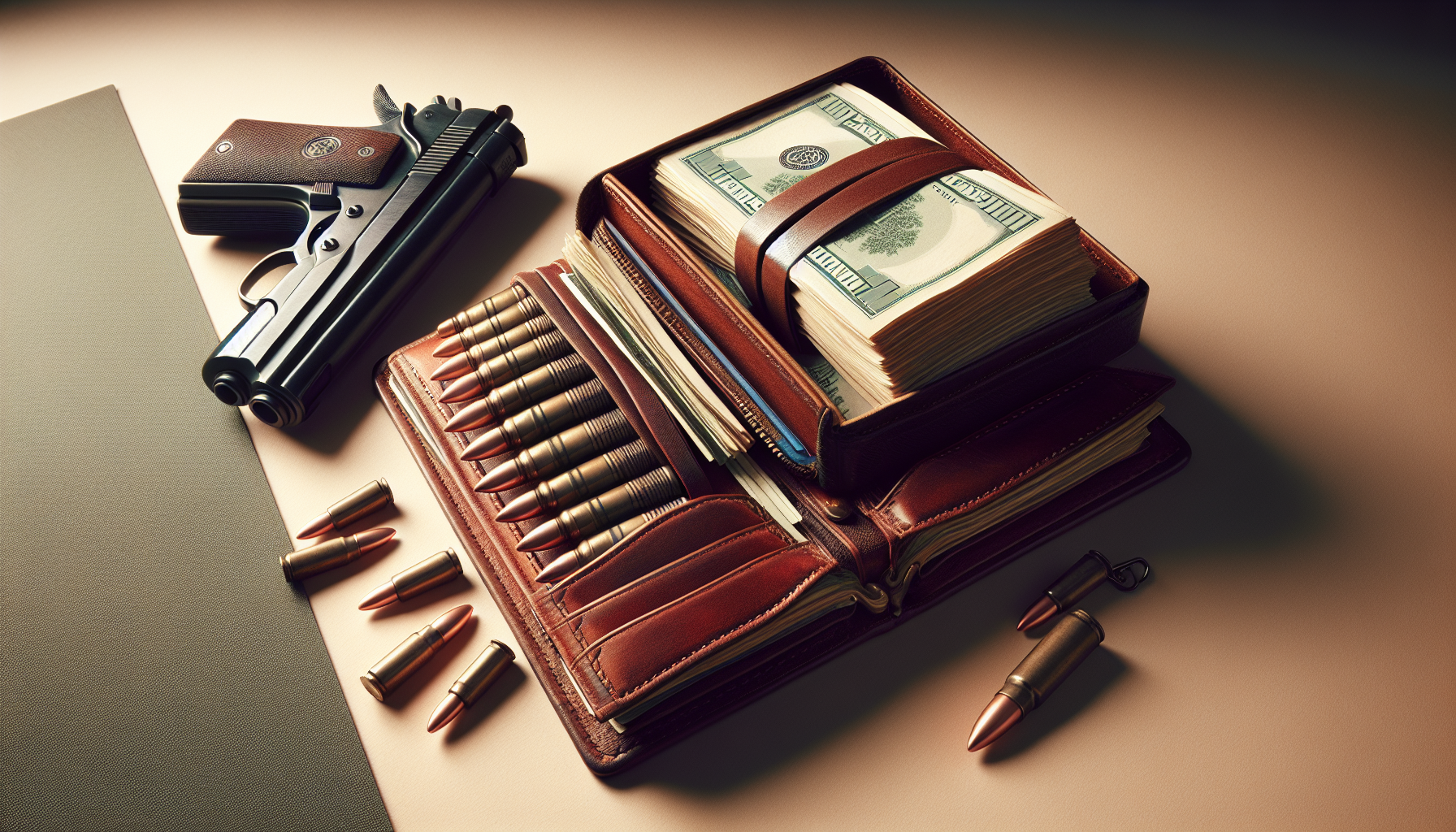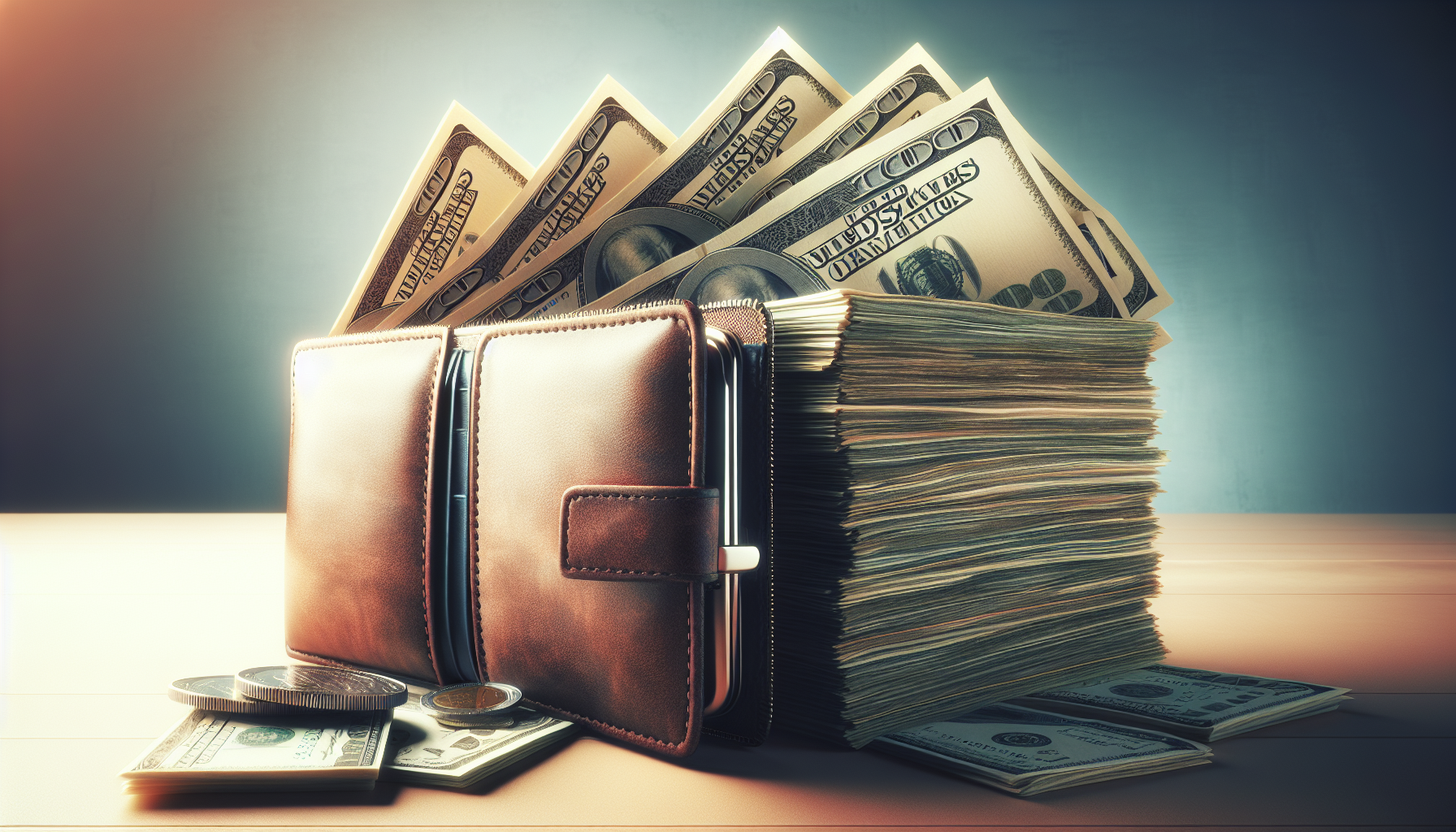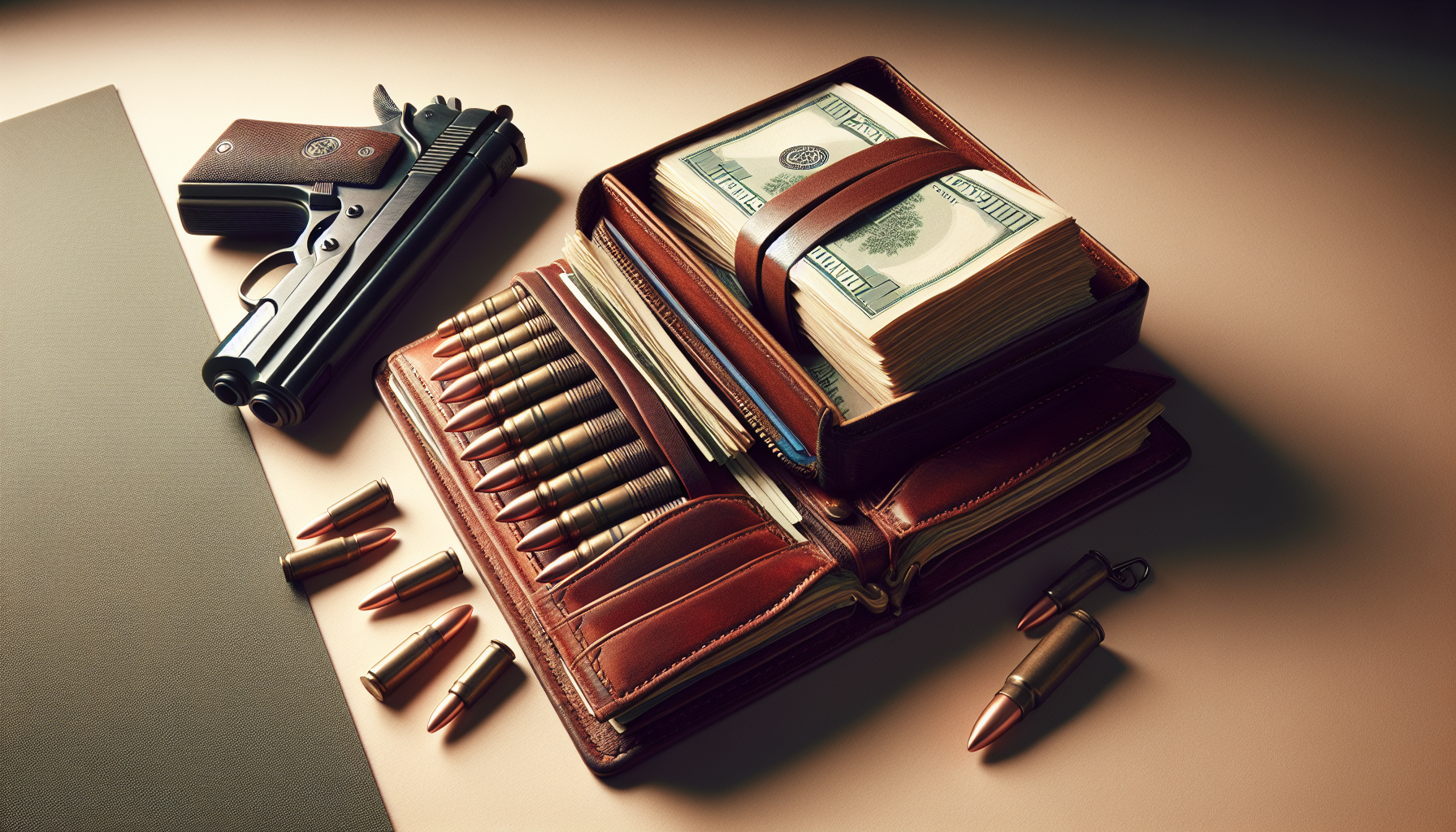If you’ve ever wondered about the financial commitment of the average prepper, you’re in for an enlightening read. In this article, we’ll explore the intriguing question of how much money is typically invested by these forward-thinking individuals in their quest for preparedness. From stockpiling food and water supplies to securing emergency shelter, we’ll unveil the fascinating world of prepping expenses and discover what it takes to be truly ready for whatever the future holds. Get ready to uncover the surprising figures behind the average prepper’s spending habits.

What is prepping?
Definition of prepping
Prepping, short for preparedness, refers to the practice of individuals or families taking proactive steps to be ready for potential emergencies or disasters. It involves acquiring the necessary supplies, skills, and knowledge to survive and thrive during challenging times.
Importance of prepping
Prepping is important because it allows you to be self-sufficient and prepared for unexpected situations. Emergencies can range from natural disasters, such as hurricanes or earthquakes, to economic downturns or power outages. By being prepared, you can reduce the impact of these events and ensure the safety and well-being of yourself and your loved ones.
Types of preppers
There are various types of preppers, each with their own approach to preparedness. These include:
- Natural disaster preppers: Focused on preparing for specific disasters like hurricanes, floods, or wildfires.
- Economic collapse preppers: Concerned with financial crises or economic collapse scenarios.
- Pandemic preppers: Prepared for widespread infectious diseases and medical emergencies.
- Off-grid preppers: Aim to live away from mainstream society and be self-sufficient in all aspects of life.
- Urban preppers: Preparing for emergencies while living in urban environments, often with limited space and resources.
- Wilderness preppers: Equipped to survive in natural environments and are skilled in hunting, fishing, and foraging.
Factors Influencing Prepping Expenses
Geographical location
The geographical location plays a significant role in determining prepping expenses. Preppers residing in areas prone to natural disasters may need to invest in specialized equipment or structures, such as storm shelters or earthquake-resistant structures.
Population density
The population density of your area can impact prepping expenses. Urban areas may require different supplies, such as self-defense equipment, while rural areas may require more tools for self-sufficiency, such as farming equipment.
Personal philosophy
Your personal philosophy towards preparedness can also influence expenses. Some preppers may opt for a minimalist approach, focusing on essential items, while others may choose to stockpile a wide range of supplies and equipment.
Level of preparedness
The level of preparedness you aim to achieve will determine your expenses. Basic preparedness may include a few days’ worth of supplies, while more advanced preppers may stockpile months or even years of provisions.
Size of household
The size of your household will impact prepping expenses. Larger families will require more food, water, and supplies, which can increase costs.
Income level
Your income level plays a significant role in prepping expenses. Some preppers may have more disposable income to invest in higher-quality supplies or specialized equipment, while others may need to budget more carefully.
Age and health condition
Age and health condition can influence prepping expenses. Individuals with specific medical needs may require additional supplies, while older individuals may need specialized equipment or aids.
Essential Prepping Expenses
Food storage
Food storage is a critical aspect of prepping. It involves stockpiling non-perishable food items that can sustain you and your family during emergencies. The cost of food storage will vary depending on factors such as the types of food purchased, duration of storage, and personal dietary needs.
Water storage and purification
Having access to clean water is crucial during emergency situations. Preppers invest in water storage containers and purification methods to ensure a sufficient and safe water supply. Costs will vary based on the size and type of containers, as well as the purification methods chosen.
Emergency shelter
Emergency shelter is essential for protecting yourself from the elements and potential dangers during a crisis. The cost of emergency shelter can range from purchasing specialized tents or portable cabins to constructing underground bunkers or reinforced safe rooms.
First aid supplies
Having a well-stocked first aid kit is vital in any emergency situation. The cost of first aid supplies depends on the size and complexity of the kit, including items such as bandages, disinfectants, medications, and medical equipment.
Self-defense equipment
Self-defense equipment becomes necessary in certain scenarios. Costs can vary depending on personal preferences, with options ranging from basic pepper spray or stun guns to firearms and ammunition.
Communication devices
Maintaining communication during emergencies is crucial for coordination and receiving crucial information. Costs for communication devices can vary depending on the desired range, durability, and features, such as walkie-talkies, ham radios, or satellite phones.
Alternative energy sources
Investing in alternative energy sources, such as solar panels or portable generators, can ensure access to electricity during power outages or other disruptions. Costs will vary based on the size and complexity of the system.
Personal hygiene and sanitation
Maintaining hygiene and sanitation is essential for preventing the spread of diseases. Preppers invest in items like hygiene kits, sanitation supplies, and portable toilets. Costs will depend on the number of individuals and the duration of the emergency.
Survival tools and equipment
Survival tools and equipment include items like knives, multi-tools, fire starters, and camping gear. Costs can vary depending on the quality, durability, and specific needs of the prepper.
Average Expenses for Food Storage
Types of food storage
There are various types of food storage, including canned goods, freeze-dried or dehydrated foods, and bulk staples like rice and beans. Preppers may also consider growing their own food and preserving it through canning or fermentation.
Cost of food storage per person
The cost of food storage per person can vary depending on individual needs and preferences. On average, preppers may spend a few hundred dollars to several thousand dollars on food storage supplies.
Factors affecting food storage expenses
Factors that influence food storage expenses include the desired duration of storage, dietary preferences or restrictions, and the number of individuals in the household. Purchasing items in bulk and taking advantage of sales or discounts can help reduce costs.
Tips for cost-effective food storage
To make food storage more cost-effective, consider rotating stock by consuming and replacing items before they expire. Additionally, growing your own fruits and vegetables, or purchasing items in bulk from local farmers or wholesalers, can help reduce expenses in the long run.

Average Expenses for Water Storage and Purification
Types of water storage
Water storage options include water barrels, water tanks, and portable water containers. Preppers can also explore rainwater harvesting or utilizing natural water sources like rivers or lakes.
Cost of water storage per person
The cost of water storage per person depends on factors such as the desired water capacity, the number of individuals, and the chosen storage method. On average, preppers may spend a few hundred to a few thousand dollars on water storage supplies.
Factors affecting water storage expenses
Factors influencing expenses include the required water volume, the need for additional purification equipment, and the chosen storage materials. Opting for durable containers and exploring natural water sources can help reduce costs.
Cost of water purification methods
Water purification methods vary in cost and effectiveness. Options range from basic filtration systems and water treatment tablets to more advanced systems like reverse osmosis or UV sterilizers.
Tips for cost-effective water storage and purification
Consider collecting and storing rainwater during the rainy season to reduce reliance on purchased water. Additionally, investing in versatile water filtration systems that can handle multiple sources, like rivers or lakes, can provide a cost-effective solution.
Average Expenses for Emergency Shelter
Types of emergency shelters
There are various types of emergency shelters, including tents, portable cabins, underground bunkers, and reinforced safe rooms. The choice of shelter depends on factors such as the level of protection required and personal preferences.
Cost of emergency shelter
The cost of emergency shelter can vary greatly depending on the type, size, and level of customization desired. Preppers may spend from a few hundred dollars for basic tents to tens of thousands of dollars for more sophisticated shelter options.
Factors affecting emergency shelter expenses
Factors that influence expenses include the level of protection desired, modifications or additions to the shelter, and the size or capacity needed to accommodate the household.
Tips for cost-effective emergency shelter solutions
To reduce costs, preppers can consider DIY shelter options using readily available materials or repurposing existing structures. Proper planning and research can help identify cost-effective solutions that meet individual needs.
Average Expenses for First Aid Supplies
Types of first aid supplies
First aid supplies encompass a wide range of items, including bandages, antiseptics, medications, splinting materials, and basic medical tools. Having a well-rounded kit ensures the ability to address minor injuries and potentially save lives in more severe situations.
Cost of first aid supplies
The cost of first aid supplies can vary depending on the complexity and size of the kit, as well as personal preferences. On average, preppers may spend anywhere from a few dozen dollars to a few hundred dollars on first aid supplies.
Factors affecting first aid expenses
Factors influencing expenses include the desired level of preparedness, the number of individuals to be supported, and the need for specialized medical equipment or medications.
Tips for cost-effective first aid preparedness
Consider purchasing first aid supplies in bulk or during sales to save money. Additionally, attending first aid and CPR training courses can enhance preparedness while minimizing the need for costly medical interventions.
Average Expenses for Self-Defense Equipment
Types of self-defense equipment
Self-defense equipment includes items like pepper spray, stun guns, firearms, and ammunition. The choice of equipment depends on personal preferences, local laws, and the desired level of protection.
Cost of self-defense equipment
The cost of self-defense equipment can vary widely depending on the specific items chosen. Preppers may spend from a few dollars on basic pepper spray to several thousand dollars on firearms and related accessories.
Factors affecting self-defense expenses
Factors influencing expenses include the desired level of protection, local regulations on firearms ownership, and ongoing costs such as ammunition or training.
Tips for cost-effective self-defense preparedness
Start with basic and affordable self-defense tools like pepper spray or personal alarms. If considering firearms, research local laws, attend training courses, and focus on essential accessories to keep costs manageable.
Average Expenses for Communication Devices
Types of communication devices
Communication devices for preppers range from basic walkie-talkies to more advanced options like ham radios or satellite phones. The choice of device depends on the desired range, reliability, and availability of communication networks.
Cost of communication devices
The cost of communication devices can vary depending on the desired features, range, and complexity of the device. Preppers may spend from a few dozen dollars on basic walkie-talkies to several hundred or even thousands of dollars on more advanced communication equipment.
Factors affecting communication expenses
Factors influencing expenses include the need for long-range communication, the availability of communication networks in the area, and ongoing costs such as licensing or subscription fees.
Tips for cost-effective communication preparedness
Consider starting with basic walkie-talkies or lower-cost ham radio equipment. Join local ham radio clubs or online communities to learn more about cost-effective communication solutions and gain access to valuable knowledge and resources.
Average Expenses for Survival Tools and Equipment
Types of survival tools and equipment
Survival tools and equipment encompass a wide range of items, including knives, multi-tools, fire starters, shelter-building materials, and camping gear. The choice of tools depends on individual needs and the specific environment being prepared for.
Cost of survival tools and equipment
The cost of survival tools and equipment can vary depending on the quality, durability, and specific features desired. Preppers may spend from a few dozen dollars on basic tools to several hundred or even thousands of dollars on specialized equipment.
Factors affecting survival expenses
Factors influencing expenses include the desired level of self-sufficiency, the specific environment being prepared for, and personal preferences regarding quality and durability.
Tips for cost-effective survival tool and equipment purchases
Prioritize essential tools that can serve multiple purposes and opt for durable, high-quality items that will last longer. Consider purchasing second-hand equipment or bundling purchases to take advantage of discounts or deals. Investing in knowledge and skills can also reduce the reliance on expensive equipment.
